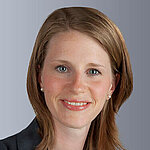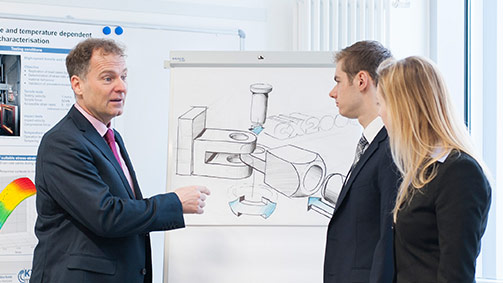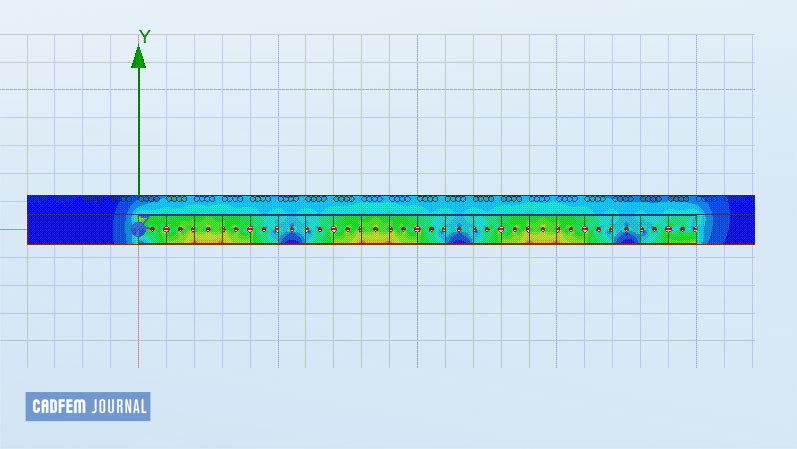Minimizing air resistance with fluid mechanics simulations
Ansys Fluent for optimizing the aerodynamics of the TUM Hyperloop
A team at TUM Hyperloop is working on various aerodynamic issues. Their profession is CFD (i.e. flow simulations), and Ansys Fluent is the first choice for this. The focus is on air resistance as the pod moves through the tube. Fluent is used to model and analyze a wide variety of scenarios and derive measures to reduce the pressure resistance based on the results.
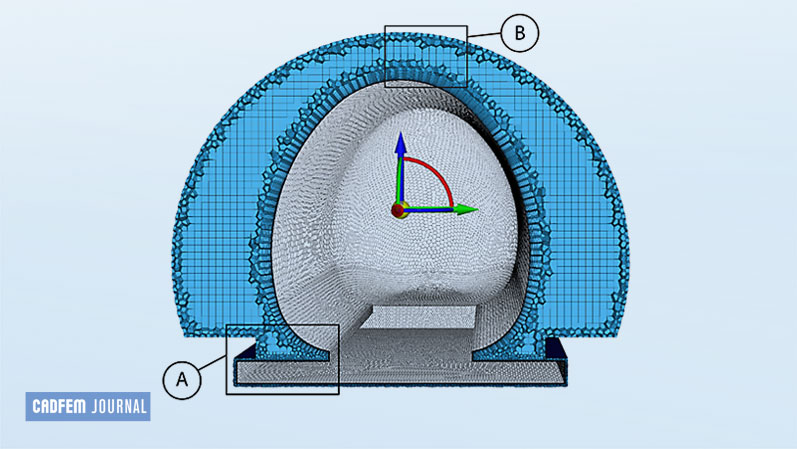
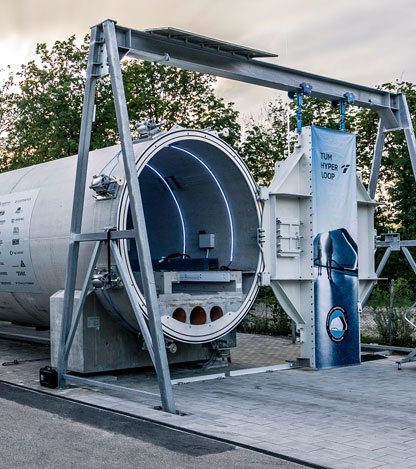
Hyperloop stands for high speed and maximum energy efficiency as well as for special aerodynamic aspects that the simulation team has to address. The air pressure in the tube in which the pod travels is already very low at around 1000 pascals. This makes it all the more challenging to find ways to reduce pressure resistance even further. One of the keys here is the blockage ratio of the tube and pod.
This is analyzed by an aero team at consistently very high speeds for many different speed profiles and blockage ratios. This aero team includes Inés Velasco Martínez, Lucía Ojer Guerra, João Nicolau, Vladislav Kukharskii, Felix Herkenrath und Domenick Radeck.
This is where the important distinction between choked and non-choked flow comes into play. Flow experts refer to the Kantrowitz limit curve (see figure), which shows the relationship between blockage ratio and (pod) speed (or Mach number). As the speed increases, the blockage ratio decreases. The Kantrowitz limit is the maximum amount of contraction a flow can experience before the flow chokes, and the flow speed can no longer be increased above this limit.
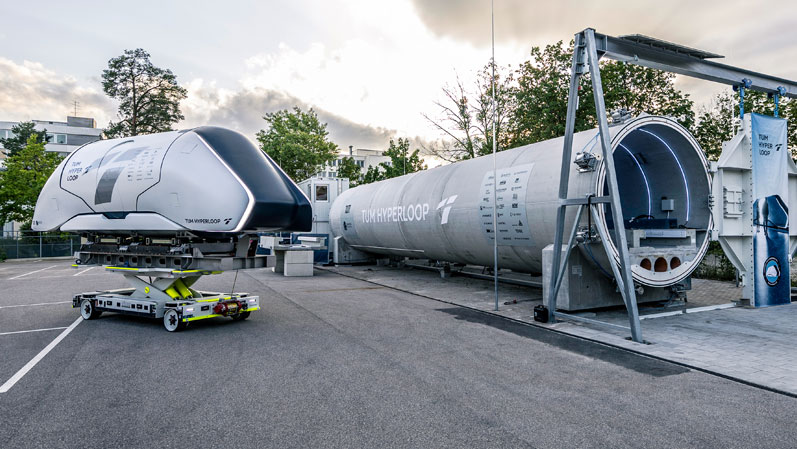
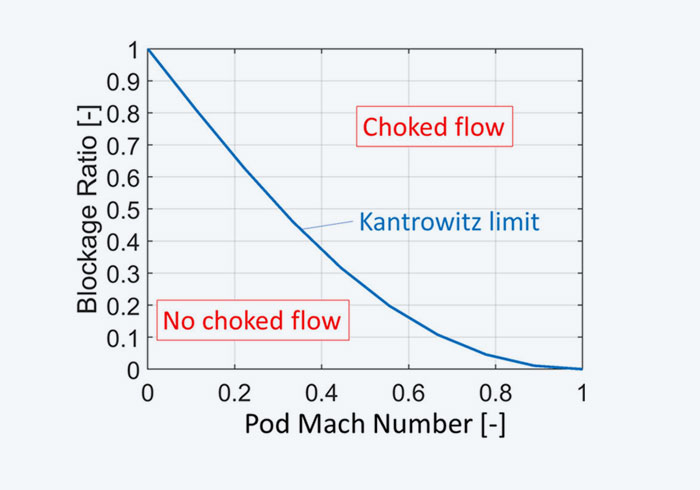
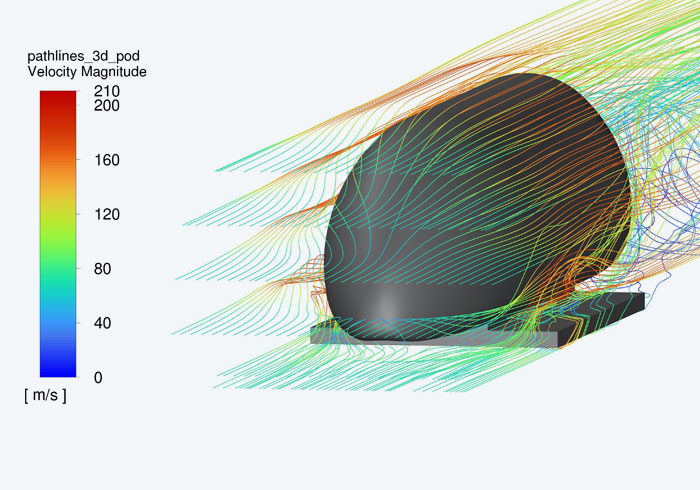
Progress and results
Under the conditions outlined above, the task of the aerodynamics team is to use Ansys Fluent to simulate various scenarios of a journey. These simulations, among other things, assess
- the effects that geometric modifications have on the aerodynamics of the pod.
- how the pressure drag changes when the angle of the pod nose is changed.
- what the various velocity profiles look like that result from the extraction of temperature, pressure, and pressure drag profiles at different acceleration times and rates.
- what happens in special Hyperloop scenarios such as "convoying", i.e. when several pods are operated in succession.
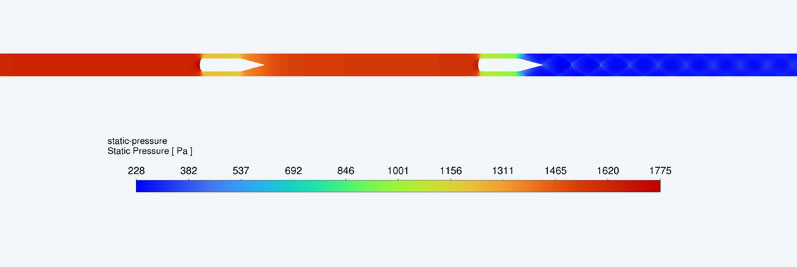
Inés Velasco Martínez, Bachelor student and simulation engineer in aerodynamicsThere are many reasons why the Hyperloop scenario is a special case of computational fluid dynamics.
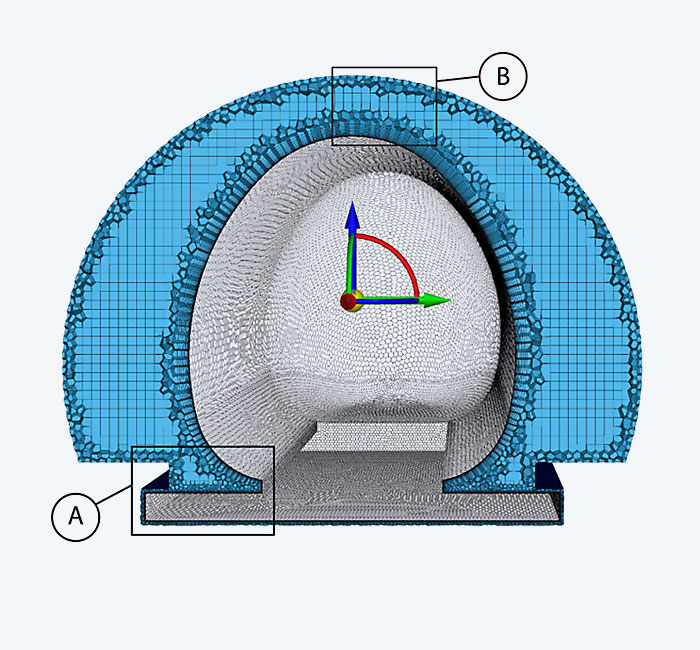
The cluster in Garching provides high computing power
In such complex simulation tasks, the quality and informative value of the results increase with the fineness of the mesh of the model. Ansys provides powerful mesh technologies for these tasks, which require high computing power. Computing power is also necessary for complex unstructured meshes in large domains, as well as for determining the optimum within a reasonable period of time for many different scenarios. Since the TUM Hyperloop team has access to the cluster of the Leibniz Supercomputing Center in Garching, the potential of flow simulations can also be exploited on the hardware side.
Results
Regarding pressure drag, the team gained valuable insights from the flow simulations. The evaluations showed that the pressure drag only increases linearly after the acceleration phase of the pod, meaning that predictions of the development of the drag can be made particularly well using mathematical modeling. It was also found that the growth rates decrease as the speed increases while the blockage ratio remains the same. Traveling at higher speeds therefore means that a lower increase in resistance can be expected.
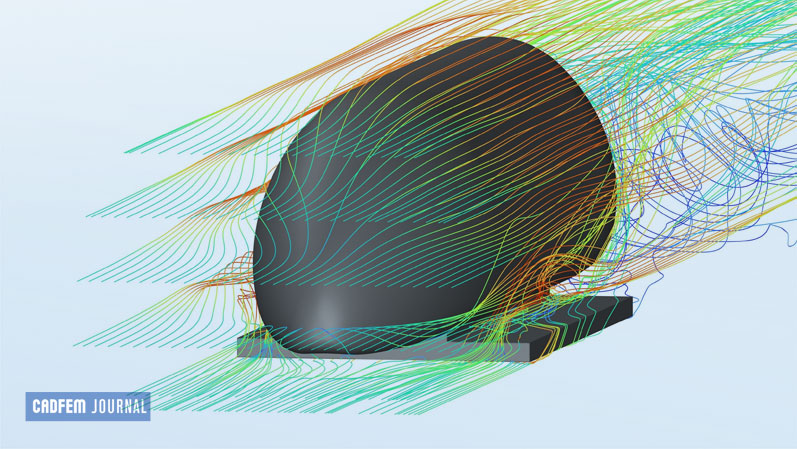
Fast, faster, Hyperloop
Around the globe, people are working on the Hyperloop, the incredibly fast transportation system of the future. The TUM Hyperloop team of students, professors, and researchers from the Technical University of Munich is at the forefront of this work. Thanks in part to state-of-the-art development tools, the realization of Elon Musk's vision is within reach at TUM. This includes simulations with Ansys as well as know-how transfer by CADFEM.
To the review article TUM Hyperloop & CADFEM
Outlook: Simulation based on a huge database
The large number of simulations that have been implemented so far has generated an immense pool of data. The team's aim is to transfer this information into a "surrogate model". This should be able to predict, among other things, the pressure resistance and energy consumption of a journey without having to set up a complete simulation. The input of the model is, for example, the rates of increase of the pressure resistance at different speeds of individual blockage ratios and a desired speed profile.
The output is then generated by interpolation and parameter estimation: A prediction of the progression of pressure resistance as a function of driving time for specific driving scenarios using a model based on data from completed simulations. This would give the team enormous additional possibilities for determining further potential.

Alice Peccard
(TUM Hyperloop Content Creation)
Author:
Inès Velasco Martínez (TUM Hyperloop)
Alexander Kunz (CADFEM Germany GmbH)
Cover Images:
Right: © TUM Hyperloop
Left: © TUM Hyperloop
Published: January, 2024
Contact CADFEM
